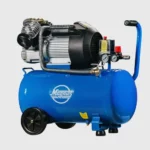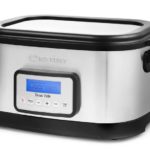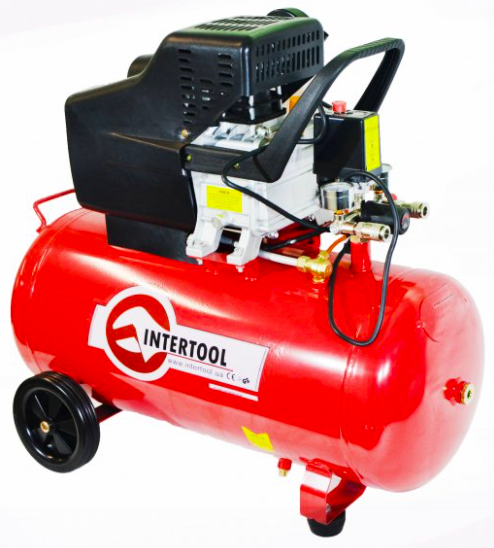What is a gasoline motor pump for water: we study the operating principle and technical characteristics
Read on and find out what a gasoline motor pump is, where gasoline motor pumps are used, types of gasoline motor pumps for water, the pros and cons of gasoline motor pumps, how a gasoline motor pump works, the operating principle of motor pumps for water, the characteristics of gasoline motor pumps that you need to pay attention to when choosing.
The content of the article
Gasoline motor pump - what is it, where is it used?
A gasoline motor pump is a device for pumping water. A portable self-contained pump that can distill both clean and dirty water. The device is powered by an internal combustion engine. Most models consume gasoline, hence gasoline motor pumps, but there are also diesel models. The main differences between gasoline motor pumps are mobility, autonomy, high power and unpretentiousness in operation. Because of this and their versatility, they have gained popularity in many areas.
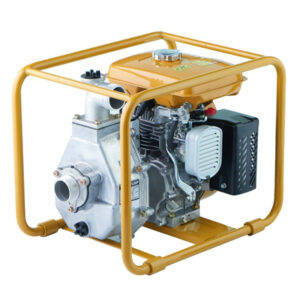
Areas in which motor pumps are used:
- Water supply with drinking water.
- Agricultural tasks, such as watering.
- Utilities and first responder services - fire extinguishing, drainage of premises, pits, drainage systems.
- Household needs.
Pros and cons of gasoline motor pumps:
- Independent from the power grid/autonomous.
- High power, efficiency and performance.
- The pump lifts water from a depth of 8 meters.
- Reliable design, protection against voltage surges and overheating.
- Built-in dry-running protection.
- Multi-year warranty from the manufacturer.
The main disadvantage of all gasoline motor pumps is gas emissions. The engine burns fuel and produces harmful gases, mainly carbon dioxide. Therefore, the room with a gasoline motor pump should be well ventilated. Another disadvantage is the high price of consumables.
How does a motor pump work? How does a gasoline water pump work?
A classic motor pump consists of:
- Enclosures/frames
- Gasoline engine
- Fuel tank
- Centrifugal pump (there are models with a diaphragm pump)
- Inlet and outlet pipes for water
- Oil containers
- Starter handles
- Automation for controlling/starting the device
The motor pump works according to the following principle:
Fuel from the gas tank enters the engine. There it burns, causing the shaft of the internal combustion engine to rotate. The shaft is directly connected to the pump - a circle with blades. It rotates the circle and blades, they also pull/suck water from the inlet pipe. Water fills the entire volume of the working chamber of the pump, and it is pushed out by a circle with blades with increased pressure.
Gasoline models with diaphragm pumps work in a similar way, but in them the shaft transmits torque not to the blades on the circle, but to the membrane or membranes. The membranes sit tightly in their sealed chambers. When the membrane retracts into itself, the air in the chamber is discharged and the inlet valve opens. The outlet valve, on the contrary, closes and the chamber is filled with water. Then the membrane changes its movement and begins to put pressure on the water. The inlet valve closes and the pressurized water exits through the second valve.
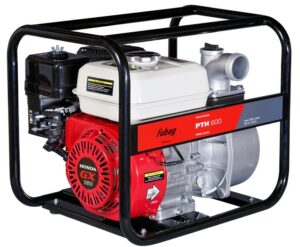
Gasoline motor pumps can be distinguished by purpose/mobility and weight:
- Household – they pump water from a depth of up to 8 meters, they weigh a little, so even mobile ones can be carried by one person. Used at home or in small workshops.
- Professional – weigh up to 100 kilograms, are carried by several people, pump out water from low depths, create powerful pressure, and can be transported by car. They are used by firefighters and special services for pumping water and extinguishing fires.
- Specialized – the largest models, rare, weigh over 100 kilograms, pump water from even lower depths, the pressure power and pressure are high. Used for professional and semi-professional purposes.
There are varieties of gasoline motor pumps based on the water they pump:
- Pure water
- With light and slight dirt
- Heavily contaminated wastewater
Devices for pumping clean water are the least powerful. They are used in everyday life, so high power is not needed. They are usually equipped with a two-stroke gasoline engine, but you can also find models with a four-stroke. They are used to supply water to a home, water a garden or drain a swimming pool.
Devices that pump lightly contaminated water are mainly used by firefighters, public utilities and special services. They are used to extinguish fires and pump out water from flooded basements or other premises. Such devices pump water over long distances. They are equipped with a four-stroke internal combustion engine, the maximum pressure reaches 60 meters, the throughput capacity is up to 600 liters per minute.
Specialized motor pumps pump out particularly contaminated water. The particle size in it can reach up to 2.5 centimeters.Such models are used for industrial and semi-industrial purposes, during construction, landscape preparation, land drainage, oil production, and more.
Choosing a gasoline motor pump, recommended models
If you decide to get a motor pump, clearly indicate the purposes for which you will use it. To pump clean water from a well/well for irrigation or water supply, a standard household model is suitable.
When choosing a motor pump, pay attention to the pump power, maximum pressure, depth and height of lift, dimensions of the nozzles, dimensions and weight of the device.
We recommend the following models for everyday use: Champion GTP 80, Kipor KDP20, Meran MPD301H, Kipor KDP30, Robin Subaru PTD 405 T.

